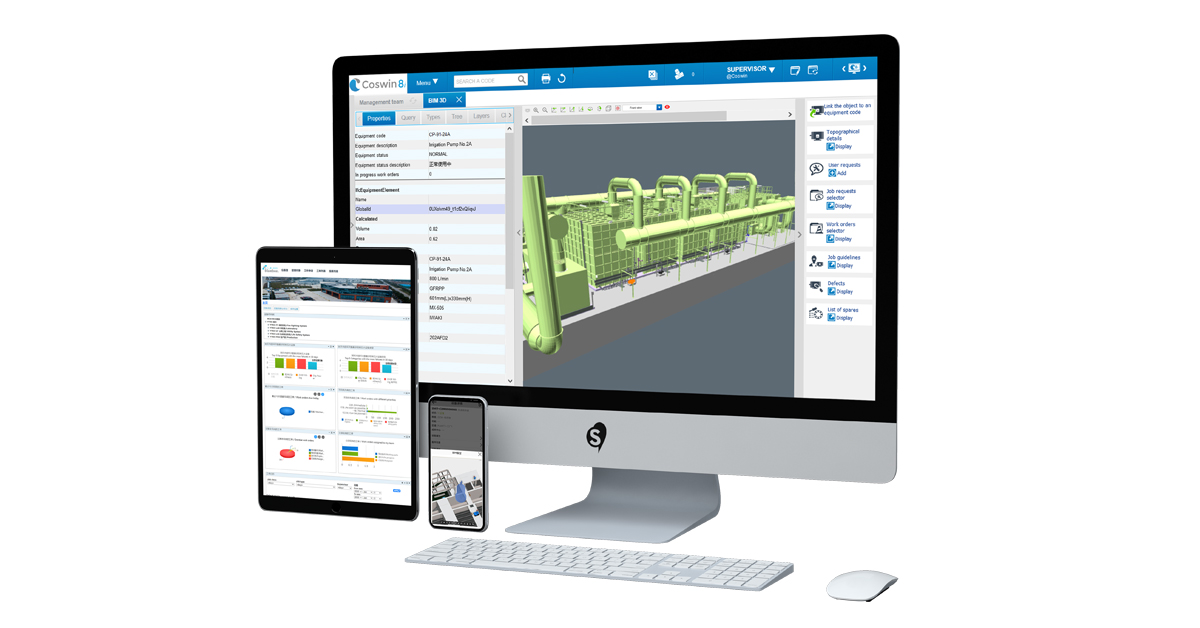Three practical findings from applying BIM in China
This article was previously published in Aquatech.
A special tool in digital transformation
Building information modelling (BIM) refers to the development of tridimensional digital representations of facilities. With proven benefits in design and construction, BIM is becoming mandatory for environmental infrastructures all over the world. Demand is now growing to extend its usage to Operation & Maintenance (O&M).
BIM plays a special role in the digital transformation arsenal as it is so visually enticing: the perfect tool to grab the attention of decision makers.
To illustrate the O&M potential of BIM, vendors often show 3D plant models, illuminated with real-time data, allowing users to navigate within the facility to locate a piece of equipment, say a submersible pump, with visual effects reminiscent of sci-fi movies.
A particularly advanced (and hilarious) video that I have seen features a plant technician holding a tablet to view 3D details of the facility, almost knocking his head on the piping!
From an O&M perspective, such usage of BIM makes no practical sense. At the scale of an entire plant, there is just too much data to show in one 3D display. Finding the pump is easier just by searching for its tag number or from a process drawing.
As for using tablets, the entire process is unrealistic and ignorant of work safety. In any case, most maintenance work can be done without the need for 3D models.
Three recommendations from China
French poet Victor Hugo once wrote: “A revolution is a return from the fictitious to the real.”
Our long experience in the Chinese market has perhaps taught us about a successful revolution.
In any case, we have had plenty of opportunities to experiment with new technologies in greenfield projects as China massively expanded its environmental infrastructure.
Here are three of our practical findings:
- 1) A good BIM model contains useful data for plant maintenance, such as assets tags and technical specifications. To achieve this, Sanwai Water Treatment Works in Hong Kong has involved our O&M experts in the development of the plant model, in coordination with the build-up of the maintenance database (spare parts lists, standard operating procedure, etc.).
- 2) The 3D drawing itself is useful for the preparation of complex, infrequent maintenance work involving multiple parties (rather than for everyday O&M), to identify access constraints, define isolation procedures and maybe to rehearse complex operations. For this purpose, Chongqing Water (China) has designed its maintenance software, used daily by the O&M team, to directly open the 3D model centred on the target equipment.
- 3) Finally, with a good as-built model and the right maintenance management software, the BIM model becomes a true Digital Twin reflecting the entire facility lifecycle from design to O&M. In a build-operate-transfer (BOT) project, the up-to-date Digital Twin can be handed over back to the owner at the end of the contractual period. We recommend owners to incorporate this requirement, as was done for Sanwai in Hong Kong under a design-build-operate (DBO) project.

All in all, if an infrastructure project has already decided to use BIM for a construction purpose, we recommend considering extending the life of the model to the entire facility lifecycle.
To do so in a realistic and potentially revolutionary manner, involve O&M specialists as early as possible, to develop the model and to design the O&M system that will utilise the model.




